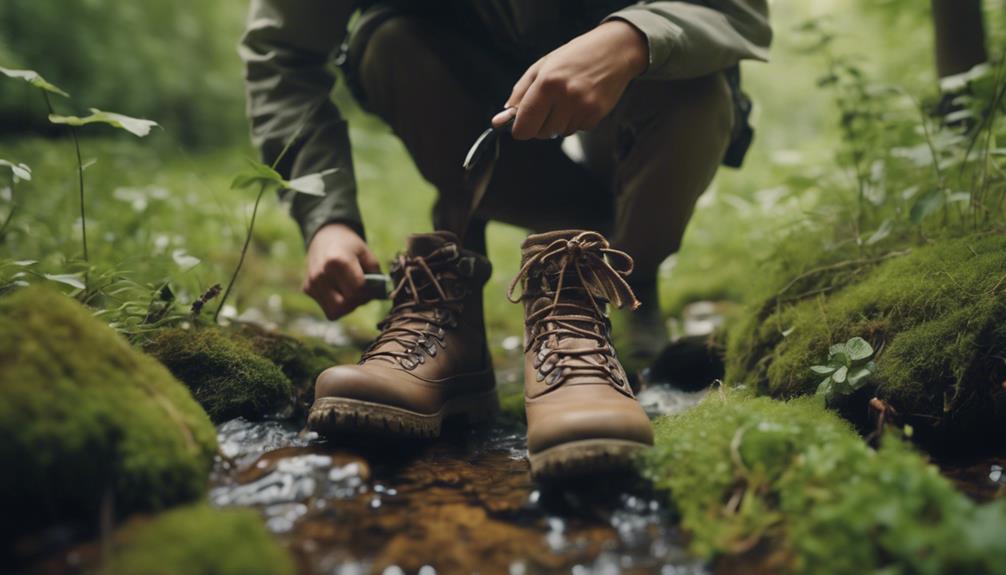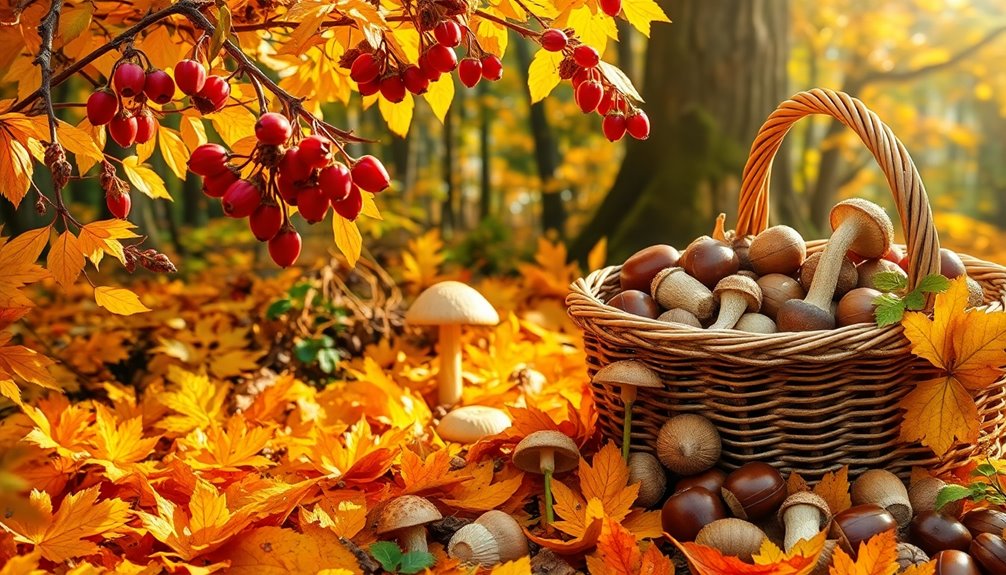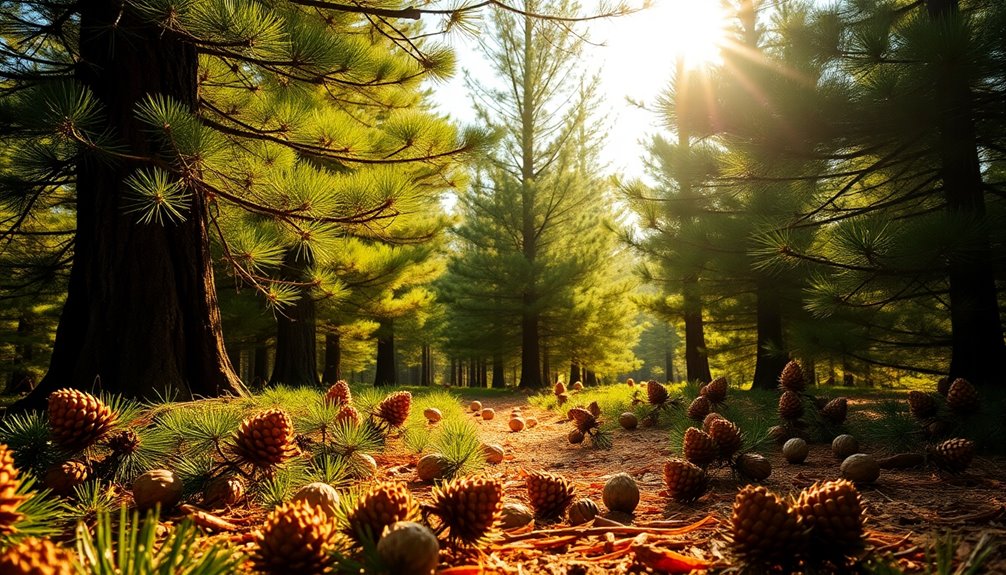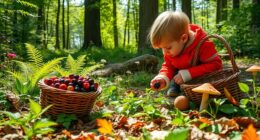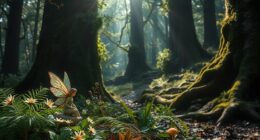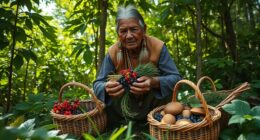Ensure your safety in the wilderness by becoming proficient in identifying different species and learning about safe foraging techniques. Connect with foraging groups to gain valuable knowledge and always prioritize safety and ethics. Make sure you have the necessary tools and practice sustainable methods. Beginners should seek guidance, start with common species, and progress gradually. Immerse yourself in foraging by using all your senses and exploring various habitats with mindfulness. By following these guidelines, you will establish a solid groundwork for successful foraging endeavors.
Key Takeaways
- Master plant identification for safe foraging.
- Consult experts and reliable resources.
- Start with common, easily identifiable species.
- Learn about habitats and potential risks.
- Prioritize safety, ethics, and sustainability.
Importance of Species Identification
To forage safely in the wild, mastering the skill of species identification is essential. The ability to differentiate between wild plants is vital to avoid ingesting poisonous species. Mistaking a toxic plant for an edible one can result in severe health repercussions. Hence, being able to accurately identify various plant species is necessary for a successful foraging experience.
When it comes to identifying wild plants, it's imperative to pay close attention to distinguishing features such as color, texture, and smell. These characteristics play a key role in differentiating between edible and poisonous plants. Seeking guidance from experts or utilizing reliable resources can also aid in accurate species identification, ensuring that you gather only safe and edible plants during your foraging adventures.
Researching Safe Foraging Practices

When researching safe foraging practices, it's important to consult experienced foragers or reliable field guides to guarantee accurate information.
Positive plant identification is a fundamental step before venturing into new species, helping you avoid potential risks.
Methodically researching, verifying, and cautiously tasting wild edibles are essential practices to enhance your foraging skills and confidence.
Safe Plant Identification
Proper plant identification is a fundamental skill necessary for safe foraging in the wild. This skill requires diligent research through various resources like field guides and online platforms.
When identifying plants, pay attention to distinguishing features such as color, smell, and habitat, which can aid in recognizing safe-to-eat species. Utilizing field guides and books specific to your region can help you familiarize yourself with local plant life.
Joining local foraging groups is another great way to enhance your plant identification skills by learning from experienced foragers. Remember, as a beginner, never consume any plant or mushroom unless you're 100% certain of its safety to avoid potential health risks.
Ethical considerations in safe plant identification include foraging sustainably, obtaining permission on private property, and avoiding chemically treated areas. By following these guidelines and continuously improving your plant identification abilities, you can safely enjoy foraging for food in the wild.
Locating Edible Sources
Researching safe foraging practices involves studying plant identification guides and consulting experienced foragers to effectively locate edible sources while foraging in the wild.
When seeking out edible plants and mushrooms, plant identification guides become invaluable resources. These guides help you differentiate between safe, edible species and potentially harmful ones. Understanding the habitats of these plants is essential for successful foraging. By learning about the ecosystems and conditions where edible sources thrive, you increase your chances of finding them in the wild.
Additionally, online resources such as foraging websites and books offer a wealth of information on safe foraging practices. They can provide detailed information on edible plants, mushrooms, and even their culinary uses. Being aware of poisonous lookalikes and potential risks in the wild enables you to make informed decisions while foraging.
Building a solid knowledge base on edible sources not only enhances your safety but also increases the success and enjoyment of your foraging expeditions.
Joining Foraging Communities

Curious how joining foraging communities can elevate your foraging skills and knowledge? Engaging with experienced foragers in these communities can provide valuable guidance and support for beginners like yourself.
Here are some ways in which joining foraging communities can benefit you:
- Enhance Skills: Interacting with experienced foragers can help enhance your foraging skills through shared knowledge and practical tips.
- Networking Opportunities: Online forums and social media groups offer platforms to connect with like-minded individuals passionate about foraging, creating opportunities for learning and collaboration.
- Hands-On Learning: Local workshops and foraging events organized by these communities are excellent opportunities to network and learn directly from experienced foragers.
- Mentorship Possibilities: Building relationships within foraging communities can lead to shared foraging expeditions and valuable mentorship, accelerating your learning process and ensuring safe foraging practices.
Joining these communities can enrich your foraging experience and help you become a more knowledgeable forager.
Prioritizing Safety and Ethics
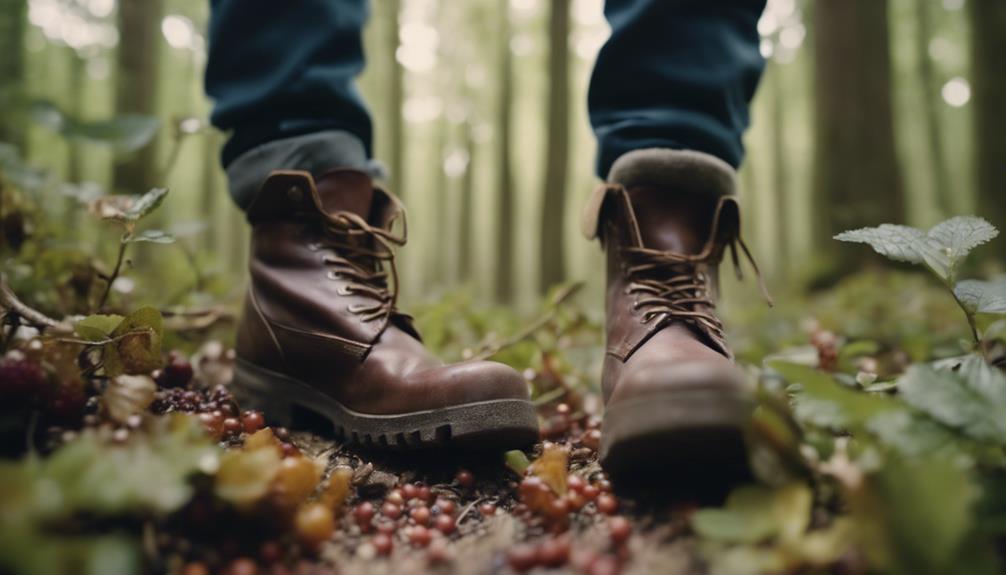
Joining foraging communities not only enhances your skills but also emphasizes the importance of prioritizing safety and ethics while foraging in the wild. When gathering wild edibles, proper identification is essential to avoid consuming poisonous plants.
Sustainable foraging practices involve collecting no more than 10% of a plant population to guarantee their continued growth and reproduction. It's vital to seek permission before foraging on private land to respect property rights and avoid potential legal issues.
Furthermore, prioritizing safety and ethics extends to respecting nature's balance. Avoid harvesting protected or rare edible plants to preserve biodiversity and prevent the depletion of vulnerable species. Additionally, take safety precautions by avoiding polluted areas and checking water sources for wild plants before consumption.
Essential Foraging Tools and Equipment
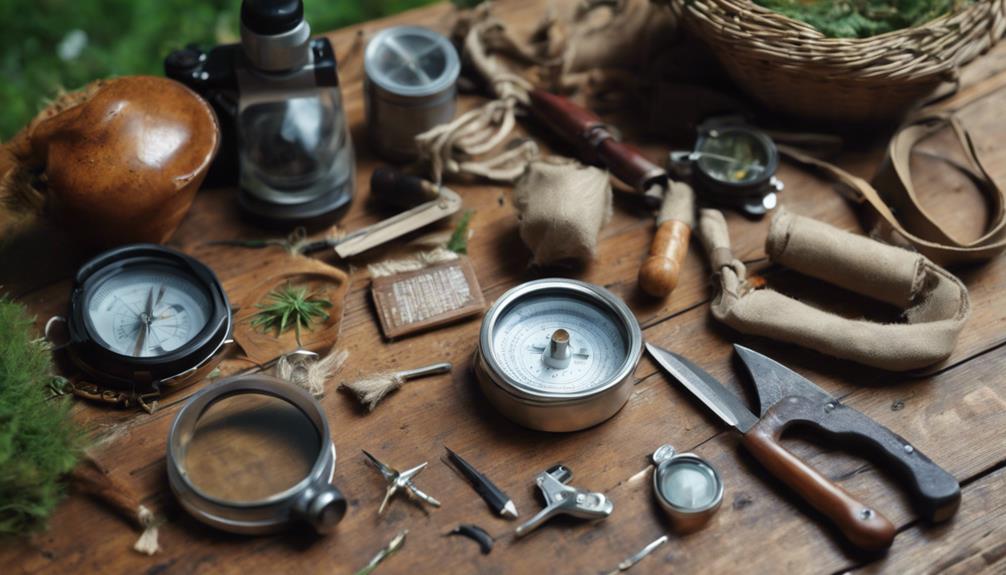
Make sure you have the necessary tools and equipment for successful foraging trips in the wilderness. When venturing out to forage for plants as beginners, having the right gear is essential. Here are some key items to keep in mind:
- Field Guide: A field guide for plant identification is vital in helping you distinguish between edible and non-edible plants.
- Container/Basket: Use a container or basket to collect your foraged items without damaging them.
- Leather Gloves: Protect your hands with sturdy gloves while handling plants to avoid any potential irritation.
- Knife/Scissors: Carry a knife or scissors for harvesting plants safely and effectively.
In addition to these basics, remember to pack a daypack for supplies, wear quality footwear, and bring along water, appropriate clothing, and a sense of adventure.
Prioritize safety and comfort by investing in a backpack for organization, a hat for sun protection, and a first aid kit for emergencies. Having the right tools not only enhances your foraging experience but also ensures safety and enjoyment while exploring the wild for edible treasures.
Tips for Beginner Foragers
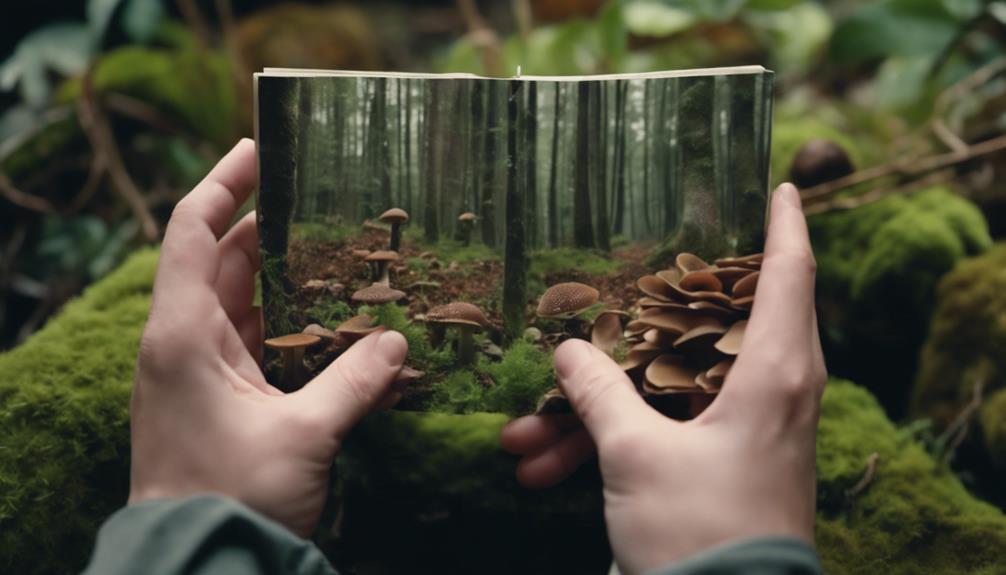
When starting out as a beginner forager, it's important to seek guidance from experienced foragers or guides to learn safe foraging practices. Always exercise caution when identifying new species, and verify them before consumption. To get started, focus on common plants and mushrooms for your initial foraging experiences. Gradually expand your knowledge by researching, tasting cautiously, and practicing in the field. Below is a table to help you recognize some common plants that are great for beginner foragers:
| Common Plants | Description | Tips for Identification |
|---|---|---|
| Dandelion | Edible leaves and flowers | Look for toothed leaves and yellow flowers |
| Wild Garlic | Has a strong garlic scent | Identify by the smell of garlic and long, thin leaves |
| Blackberries | Sweet, juicy berries in clusters | Recognize by the thorny stems and dark purple berries |
| Nettles | Nettle-like leaves with stinging hairs | Wear gloves and look for jagged edges on the leaves |
| Plantain | Broad leaves with parallel veins | Identify by the ribbed leaves and clusters of small flowers |
Sustainable Foraging Practices

To practice sustainable foraging, prioritize responsible harvesting to safeguard wild plant populations. By following ethical foraging guidelines, individuals can contribute to the long-term sustainability of wild food sources.
Here are some key points to keep in mind:
- Avoid Over-Harvesting: Collect only what you need to maintain ecosystem balance.
- Respect Sensitive Habitats: Be mindful of the impact foraging can have on delicate ecosystems.
- Promote Biodiversity: Incorporating wild plants into sustainable practices can help promote biodiversity and ecosystem health.
- Understand Environmental Impact: It's important to understand the impact of foraging on the environment to make informed decisions.
Enjoying the Foraging Process
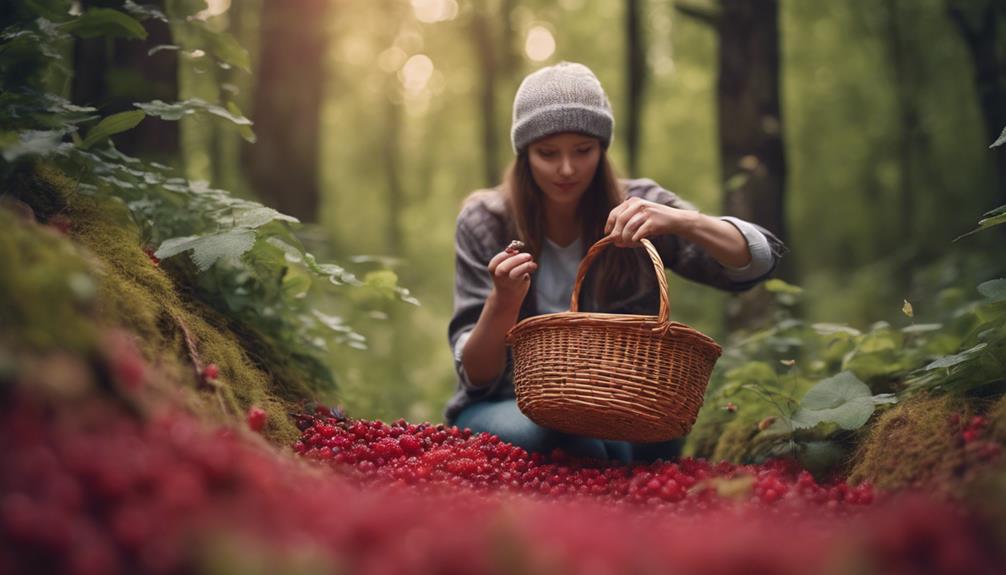
To fully enjoy the foraging process, engage all your senses to immerse yourself in the wilderness. By taking time to observe and appreciate your surroundings, you enhance your connection with nature.
Exploring different habitats won't only broaden your foraging horizons but also offer a variety of edible treasures to discover.
Mindful Exploration Techniques
Enhance your foraging experience by engaging all your senses, connecting with nature on a deeper level as you observe plant characteristics and embrace the mindful exploration process.
When foraging, take the time to truly immerse yourself in the environment around you.
Here are some tips to help you make the most of your mindful exploration:
- Use all your senses: Feel the textures of leaves, smell the earthy scents, and listen to the rustling of the wind through the trees.
- Observe plant characteristics: Pay attention to the shape of leaves, the color of berries, and any unique features that can help you identify edible plants accurately.
- Embrace mindfulness: Practice gratitude for the opportunity to forage and learn about nature's bountiful offerings.
- Connect with nature: Develop a deeper understanding of the natural world through your mindful exploration during foraging expeditions.
Connecting With Nature
Immerse yourself fully in the foraging process to deeply connect with nature and appreciate the wonders of the environment. Engaging all your senses while foraging allows you to truly experience the beauty of the local environment. By observing the intricate details of plant life, listening to the rustling of leaves, inhaling the earthy scents, feeling the textures of different vegetation, and savoring the tastes of wild edibles, you establish a profound connection with nature.
This connection goes beyond just enjoying the foraging process; it fosters mindfulness, gratitude, and a sense of belonging within the ecosystem. Foraging provides a unique opportunity to learn about the local environment, understand plant life, and appreciate the delicate balance of the ecosystem.
Frequently Asked Questions
How Do Beginners Do Forage?
You begin foraging by learning to identify common plants like dandelions and nettles. Seek advice from experienced foragers or join local groups. Stick to safe areas, use resources for identification, start small, and avoid risky plants.
How to Start Foraging for Food?
Want to start foraging for food? Begin by researching common edible plants. Join foraging groups or workshops for practical knowledge. Start in safe areas like parks. Use all senses for identification. Remember to seek permission on private property.
What Is the Golden Rule of Foraging?
Never eat any plant or mushroom unless you're 100% sure it's safe. Avoid anything uncertain while foraging. Stay away from chemically treated areas and only take what you need to protect the environment.
What Is the Easiest Food to Forage?
When foraging, berries are a beginner's best bet. They're easy to find and taste great. Nettles and dandelions are good too. Keep it simple and safe. Happy hunting!
Conclusion
In summary, foraging for food in the wild can be a rewarding and fulfilling experience when done safely and responsibly.
Remember, proper species identification and research are essential for your safety.
Joining foraging communities can provide valuable knowledge and support.
Always prioritize safety and ethics, and make sure to have the essential tools and equipment on hand.
With sustainable practices and a love for the process, you can enjoy the wonders of foraging to the fullest extent.
Happy foraging!

